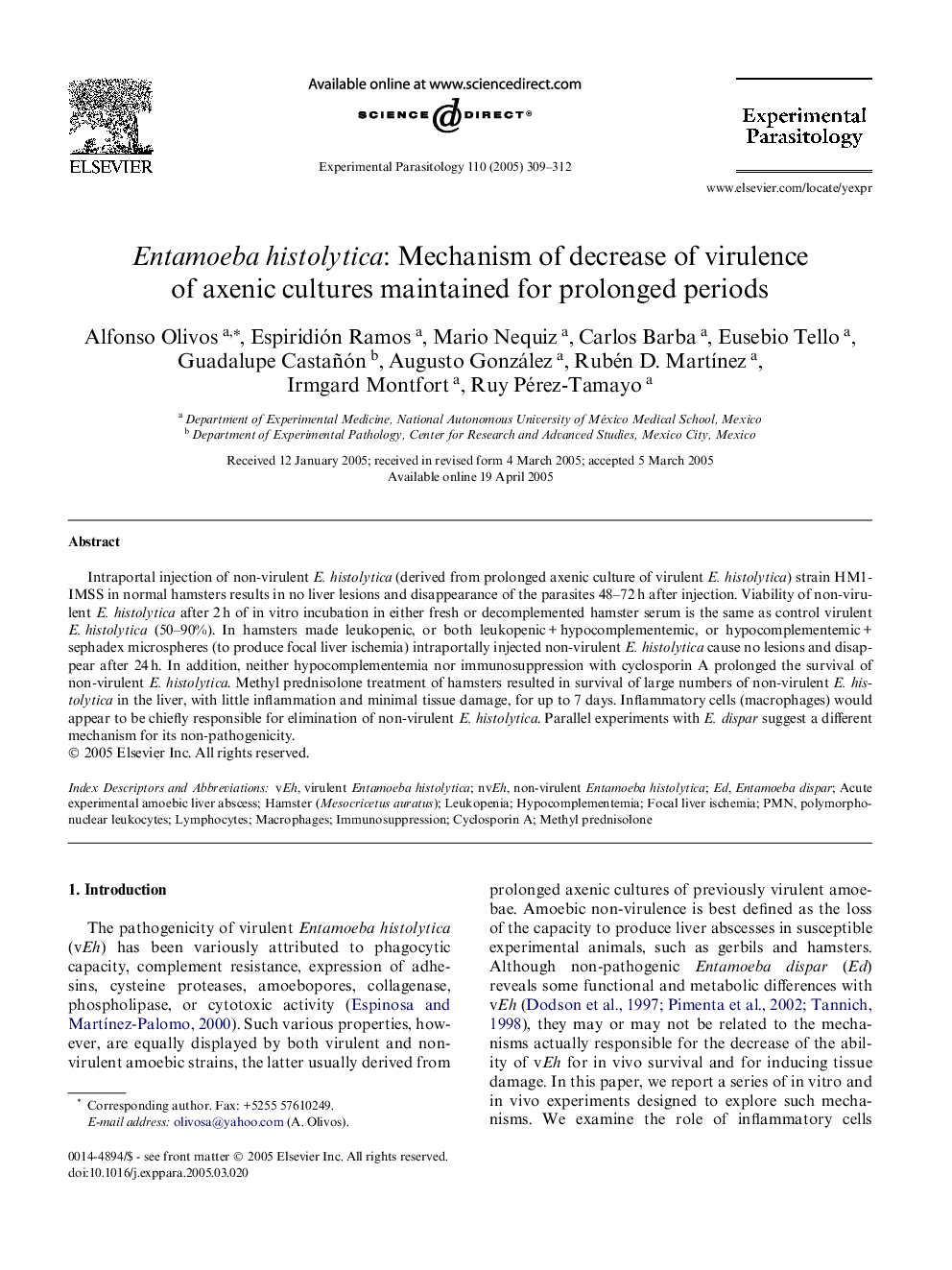| Article ID | Journal | Published Year | Pages | File Type |
|---|---|---|---|---|
| 9442981 | Experimental Parasitology | 2005 | 4 Pages |
Abstract
Intraportal injection of non-virulent E. histolytica (derived from prolonged axenic culture of virulent E. histolytica) strain HM1-IMSS in normal hamsters results in no liver lesions and disappearance of the parasites 48-72 h after injection. Viability of non-virulent E. histolytica after 2 h of in vitro incubation in either fresh or decomplemented hamster serum is the same as control virulent E. histolytica (50-90%). In hamsters made leukopenic, or both leukopenic + hypocomplementemic, or hypocomplementemic + sephadex microspheres (to produce focal liver ischemia) intraportally injected non-virulent E. histolytica cause no lesions and disappear after 24 h. In addition, neither hypocomplementemia nor immunosuppression with cyclosporin A prolonged the survival of non-virulent E. histolytica. Methyl prednisolone treatment of hamsters resulted in survival of large numbers of non-virulent E. histolytica in the liver, with little inflammation and minimal tissue damage, for up to 7 days. Inflammatory cells (macrophages) would appear to be chiefly responsible for elimination of non-virulent E. histolytica. Parallel experiments with E. dispar suggest a different mechanism for its non-pathogenicity.
Keywords
Related Topics
Life Sciences
Immunology and Microbiology
Parasitology
Authors
Alfonso Olivos, Espiridión Ramos, Mario Nequiz, Carlos Barba, Eusebio Tello, Guadalupe Castañón, Augusto González, Rubén D. MartÃnez, Irmgard Montfort, Ruy Pérez-Tamayo,
